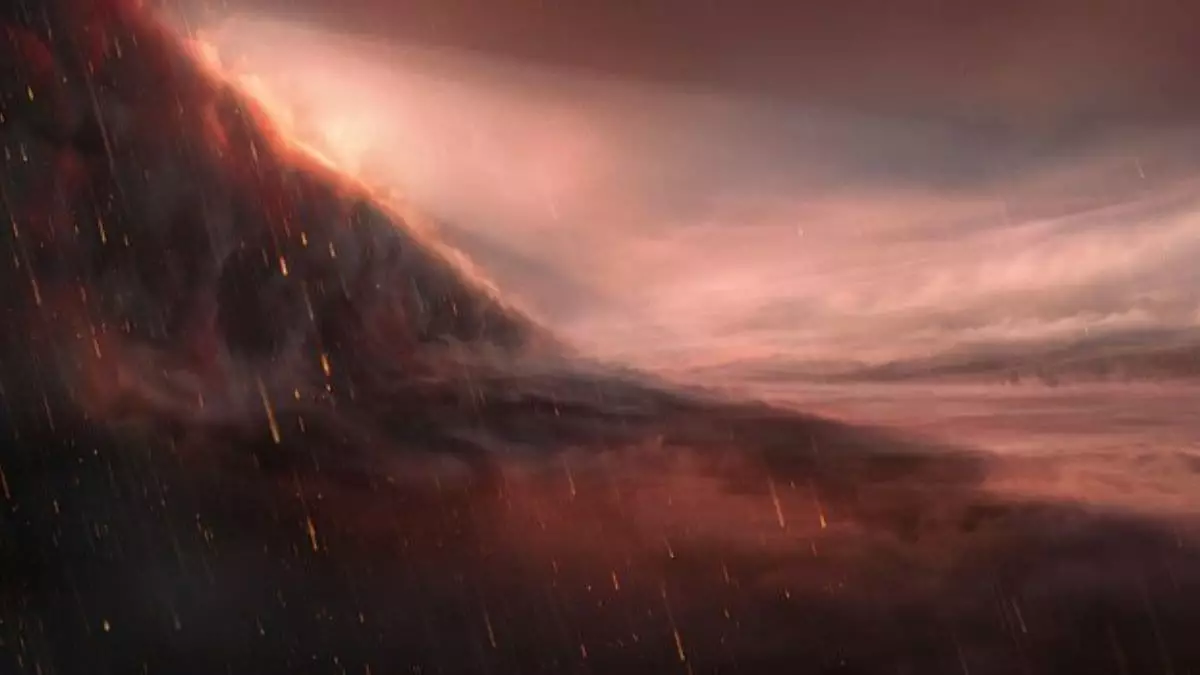In the vast expanses of our universe, the discovery of exoplanets has continually captivated the scientific community. Among these celestial bodies is WASP-121 b, a striking specimen located approximately 900 light-years from Earth. This planet is characterized by extreme weather patterns that challenge what we know about atmospheric phenomena, showcasing conditions that could be likened to a cosmic tempest.
WASP-121 b falls into the category of ultra-hot Jupiters, boasting remarkable traits that differentiate it from the more familiar planets of our solar system. This exoplanet, with a mass roughly 1.2 times that of Jupiter, orbits its star in an astonishingly short period of just about 30 Earth hours, leading to a startling phenomenon: it remains tidally locked. As a result, one hemisphere is perpetually bathed in sunlight while the opposite side is eternally shrouded in darkness.
The dayside of WASP-121 b is suffocated by extreme heat, resulting in the vaporization of metals, predominantly iron. Astronomers have observed that high-speed winds, akin to the fiercest hurricanes known on Earth, carry these vaporized metals across the planet. The intense atmospheric activity creates a unique weather system where metals condense on the cooler nightside, resulting in a dramatic “iron rain.” This interplay of elements creates a complex and dynamic atmosphere, raising questions about the fundamental laws governing weather patterns.
Innovative Observational Techniques
The observations leading to these monumental discoveries were conducted using the Very Large Telescope (VLT) located in the Atacama Desert of Chile. Researchers employed the ESPRESSO instrument, a sophisticated tool that enables scientists to delve deeper into the atmosphere of WASP-121 b. By merging light from multiple telescopes, they achieved a level of detail previously thought impossible, revealing the intricate layers of the planet’s atmosphere and providing a comprehensive understanding of its chemical composition.
The analysis, grounded in methodologies that have greatly evolved through time, particularly noted the movement of elements like hydrogen, sodium, and iron at various altitudes. The observed wind patterns have extended the scientific community’s understanding of atmospheric dynamics in exoplanets, something that is difficult to achieve with space-based telescopes.
Dr. Julia Victoria Seidel from the Observatoire de la Côte d’Azur remarked on the substantial implications of WASP-121 b’s climate for our understanding of meteorology. The planet’s atmosphere presents unprecedented challenges, as atmospheric jet streams may shift materials across hemispheres, blurring the lines between science fiction and reality.
Moreover, a particularly intriguing discovery was the detection of titanium within the planet’s atmosphere—an element not previously observed in this context. Researchers hypothesize that titanium may reside in deeper layers that the advancements in observational instruments have only now allowed us to reach. This finding adds another layer of complexity to our understanding of atmospheres beyond our solar system and emphasizes the novelty of the conditions present on WASP-121 b.
As our methodologies in observing distant worlds evolve, the implications of findings on WasP-121 b extend well beyond a singular planetary analysis. The extreme conditions of WASP-121 b force the scientific community to reconsider long-standing theories in meteorology and planetary science. The rich variations in atmospheric phenomena observed on exoplanets offer new avenues for research, demonstrating just how diverse the weather can be in the cosmos.
The extreme weather patterns on WASP-121 b not only enhance our knowledge of exoplanetary atmospheres but also challenge our existing frameworks of understanding. As researchers continue to unravel the mysteries of such alien worlds, we edge closer to a more comprehensive understanding of the universe’s vastness and the myriad of conditions that exist beyond our terrestrial realm.

